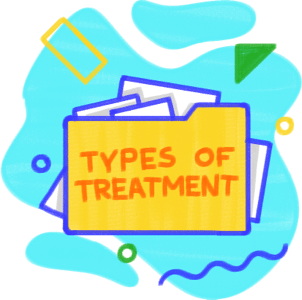If your child has been diagnosed with central precocious puberty (CPP), you may wonder if CPP treatment is the best course of action, and if so, what kind. We’ve outlined some important factors to consider when making your decision, including the goals of CPP treatment, treatment types, duration of treatment, dosing options, and insurance coverage—all so you can make an informed choice for your child.

CPP Treatment Goals
While the primary goal of CPP treatment is to enable your child to reach their adult height potential, treatment also impedes other physical and psychosocial signs of early puberty, like body hair and odor, menstruation, and mood swings.
Often, CPP treatment can pause premature puberty so your child can stay little a little longer. But depending on your child’s age and how quickly puberty is progressing, their physician may not recommend treatment at all. Talk to your child’s doctor about whether or not medication is recommended and make an informed decision.

GnRH Analogue Therapy as CPP Treatment
Short for gonadotropin-releasing hormone, GnRH causes the pituitary gland in the brain to create and secrete puberty hormones. GnRH analogue therapy works by suppressing these puberty hormones, in turn suppressing premature puberty. This medication has resulted in significant improvement in adult height for the vast majority of children with CPP, with the best outcomes seen in those who are diagnosed with CPP and begin treatment before six years of age.
In rare cases, an underlying medical condition like a genetic disorder or a tumor can cause central precocious puberty, necessitating treatment specific to that condition. Usually, though, CPP is idiopathic, meaning it has no identifiable cause. If your child has idiopathic CPP, their doctor may prescribe GnRH analogue therapy.

CPP Treatment Options and Duration
CPP treatment has advanced over the years giving patients a range of options for how (and how often) to receive treatment. GnRH analogue therapy can be administered via subcutaneous injections (just under the skin into the fatty tissue), intramuscular injections (into muscle fiber), or subcutaneous implants, which all have their own advantages and disadvantages.
- Subcutaneous (SC) GnRH analogue injections: Delivered every six months via a shot into the fatty tissue that lies between the skin and the muscle. While subcutaneous shots may hurt a bit at the injection site, pain usually does not last long.
- Intramuscular (IM) GnRH analogue injections: Administered every one, three, or six months into the muscle below the skin and fatty tissue. Intramuscular shots also may hurt a bit at the injection site and often result in muscle pain and soreness over the next few days.
- Hormonal implants: Placed under your child’s skin through an incision, typically in the upper arm requiring surgery, anesthesia, and sometimes general anesthesia for insertion. Implants typically last a year or more, needing to be surgically removed.
Other considerations:
- Needle size and injection volume: Longer needles pose a higher risk of bone or nerve injury, while shorter needles minimize secondary swelling, risk of hematoma. Thinner needles and smaller injection volumes may minimize discomfort and provoke less fear.1
- Number of injection sites: Limited injection sites also may lead to a higher risk of bone or nerve injury. In children, the number of potential injection sites is critical, especially in cases of little muscle mass which can be common.
- Duration of action: Shorter-acting formulations may lead to dosing non-adherence due to more frequent injections, while longer-acting options reduce healthcare visits but require careful monitoring for timely disease management and implant replacement.
The duration of every type of GnRH analogue therapy depends on when your child first starts their central precocious puberty treatment. Children receive medication until they reach a normal age for puberty. Then menstruation may begin at an average of 16 months after treatment cessation. But activation of puberty will likely be 3-6 months.

CPP Treatment Insurance Coverage
When navigating your child’s CPP treatment options, it’s important that you feel comfortable and confident utilizing your insurance benefits. Learn about doctor’s visit, medication coverage, appeals, payment assistance, and more in our CPP Insurance 101 article.
At the end of the day, the details of your child’s CPP treatment are up to you and their doctor. The more you know, the simpler it will be to make the right decision for your family.
TPI.2022.3205.v1(v1.1)
- Popovic J, Geffner M, Rogol A, et al. Gonadotropin-releasing hormone analog therapies for children with central precocious puberty in the United States. Front Pediatr. 2022;10:1-12. ↩︎




